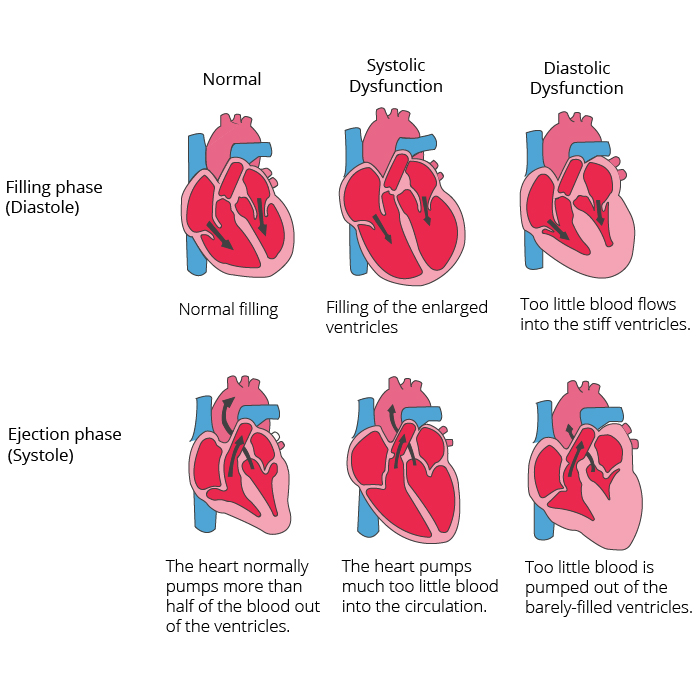Why is Every 3rd Person in the Population Suffering from a heart attack?
What is heart failure?
It is a condition when the heart cannot supply an adequate amount of blood to the body because the supply of blood to the heart is greatly reduced due to any blockage. The blockage is usually due to the deposition of fat cholesterol and other substance in the coronary artery. A lack of blood flow can damage or destroy part of the heart muscle. A heart attack is also called a myocardial infarction.
There are 6 major principles of heart failure.
• Pump failure: when the contraction of the myocardium(heart muscle) is weak. Weak contraction of the heart would result in relatively less amount of blood pumped from the heart to the body.
• Flow obstruction: It is a condition when the blood circulation is reduced by any source eg atherosclerotic plaque ( accumulation of fats in the arterial wall)
• Regurgitation flow
• Backflow of the blood because the heart valves cannot close properly.
• Shunted flow: the abnormal flow of the blood like mixing of the oxygenated and deoxygenated blood.
• Disorders of heart conduction: The heart cannot receive the proper impulse of contraction or may receive it again and again without any break this cause the heart to remain in a state of contraction and cause heart failure.
• Rupture of heart major vessel.

Now to understand heart failure better we shall look at how a normal heart works.
The major components of normal heart flow are:
• 4 chambers ( Right atrium, Right ventricle, Left atrium, and Left ventricle)
• 4 valves ( tricuspid, mitral, pulmonary , aortic)
• 2 major vessels ( vena ceva and aorta) the vena cava is responsible for bringing the blood from the body to the heart whereas the aorta takes the blood from the heart to the body
• Lungs ( where the blood goes for oxygenation)
• Pulmonary vein and pulmonary artery ( Pulmonary vein brings blood from the lungs to the heart whereas pulmonary artery brings blood from the heart to the lungs for oxygenation)

Above is the picture of how blood travels from the body to the heart then to the lungs and finally after oxygenation out of the body.
Now let’s look at the types of heart failure
• Left-sided heart failure
• Right-sided heart failure
• Biventricular heart failure
• High output heart failure
Left-sided heart failure:
It is the most common type of heart failure also known as forward failure because the left side of heart cannot pump blood into aorta which resultantly favors the accumulation of blood in the left side of the heart since the left side of the heart receives blood from the lungs the lungs would also get overloaded with the accumulated blood. The blood is not ejected in the aorta thus accumulating in left heart and lungs which could start the deteriorative cycle of heart failure.
• Right-sided heart failure
It is a backward failure because the right side of the heart fails to pump the blood from the right ventricle to the lungs hence the blood accumulated in the right side of the heart. It is commonly caused by right-sided heart failure.
• Biventricular heart failure
It is a type of failure in which both the sides of the heart are affected signs and symptoms of Bi ventricular failure are a combination of both left and right failure.
symptoms:
shortness of breath
swelling in legs
painful chest
edema (accumulation of water).
• High output cardiac failure
It happens when the need of blood is higher in the body and the normal blood supply is insufficient for the body.

SYMPTOMS:
Chest pain that feel like chest tightness thrombing pain radiating towards the shoulder, arm, back, and jawsweating fatiguenausea with too much discomfort shortness of breat women may have a symptoms like sharp pin felt in neck, arm or back.
some time person do not show any symptoms or sign and have sudden cardiac arrest.
WHAT TO DO WHEN YOU ARE HAVING A HEART ATTACK:
If you think you are having a heart attack, immediately call 911 or take a drug which can bring your blood pressure down or take a drug that can prevent the blood clotting like asprin or nitroglycerine which is prescribed by your doctor. Don does not take any medicine without the prescription of your doctor.
WHAT TO DO WHEN YOU SEE SOME ONE IS HAVING A HEART ATTACK:
When you see some one is having a heart attack call on emergency number 911. if the person is not breathing and has no pulse then you should give them CPR
if you do not know how to give CPR than do hands-only CPR which means that push hard and fast on a person’s chest about 100-120 compression in a minute
if you know how to give CPR than begin with 30 chest compression before giving two rescue breaths.
CAUSES :
CORONARY ARTERY DISEASES is one of the major causes of a heart attack. In coronary artery diseases, blockage of a coronary artery due to any cholesterol or lipids containing plaques resist the blood flow to the heart and heart muscle does not get proper nutrients, and heart muscles get died.
if the plaques break down it can cause a blood clot in the heart.
A heart attack may be caused due to complete or partial blockage of the coronary artery which can be by ECG and EKG.
Certain infections like COVID can also cause heart muscle damage.
RISK FACTORS:
AGE: People aged more than 50 are more likely to get a heart attack than young ones.
CHAIN SMOKERS: smoking can damage your blood vessels hence increasing the chance of heart attack.
HIGH-BLOOD PRESSURE: high blood pressure for long time can damage your arteries and hence resist the blood supply to the heart.
HIGH CHOLESTEROL LEVEL: high levels of bad cholesterol LDL VDL triglycerides cause plaque formation hence block the blood supply to the heart.
OBESITY: people with overweight have more bad cholesterol and their arteries get damaged.
DIABETES: High blood sugar level can increase the risk of heart attack.
NO EXERCISE: exercise keeps your muscle strong and help in maintaining your body weight. so no exercise can cause the person to get overweight.
UNHEALTHY FOOD: unhealthy food contains a high level of fats sugar and salt. fats can deposit in your arteries and salt can also increase the risk of BP.
STRESS: extreme levels of anger and stress also cause heart attacks.
USE OF DRUGS: coccain heroine and certain drugs can trigger coronary artery damage hence increase risk of a heart attack.

PREVENTION:
- Maintain a healthy life style
- Do not smoke and drink alcohol
- maintain the body weight
- get regular exercise
- don’t take the stress
- reduce the use of sugar and salt
- maintain your bp and sugar level.
- Try to take all preventive measures to remain safe from the risk of heart attack.
Author


